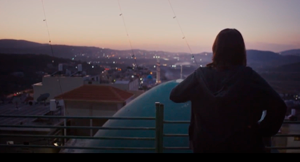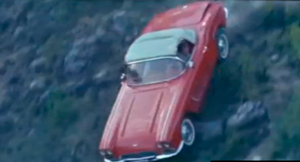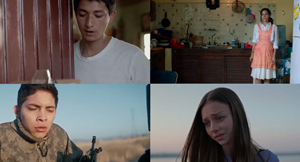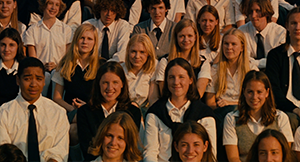Tecmerin. Journal of Audiovisual Essays
Issue 15 – 2025 (1)
Cineradiographic Vision
Onur Turgut (Ozyegin University)
In this audiovisual essay, I explore whether cinematic space can be perceived through an X-ray perspective by employing X-ray technology as a cinematographic apparatus. The concept of the cinematographic apparatus here is understood not merely as a technical device but as a system of visual and perceptual organization, reconsidered through the mechanical and spectral properties of cineradiographic images. The term cineradiography, which gives the project its title, underscores the capacity of imaging technologies to reveal the anatomy of cinematic space, both metaphorically, by unraveling spatial meaning, and perceptually, by disrupting visual norms. Within this framework, cinematic space is not defined solely by physical coordinates but is instead conceptualized as a perceptual experience that is continually restructured through technological mediation.
Several scholars have investigated the intersection of X-ray imaging and the history of cinematography, noting formal and epistemic parallels between the two domains (Cartwright, 1995; Tsivian, 1996; Crangle, 1998; Lippit, 2005; Jülich, 2008; Jackson, 2021). While prior studies have focused on the representation of the body through medical imaging, my approach redirects this gaze toward the perception of cinematic space itself. I position X-ray technology as a visual logic capable of disclosing the internal architecture of space and reimagine how the cinematic environment can be sensed and constructed. In this rethinking, the X-ray ceases to be merely a diagnostic tool and becomes a medium that collapses the boundaries between surface and depth, interior and exterior. As Akira Lippit (2005) observes, the X-ray image dissolves spatial distinctions between the body and the world, binding them in an inseparable and heterogeneous relationship. This convergence of interior and exterior, subject and environment, erases the limits of visual perception and radically redefines the contours of cinematic space.
Beyond spatial dissolution, the X-ray also introduces a temporal dislocation. As Leeder (2017: 100) points out, radiographic aesthetics produce a ghostly simultaneity in which the living present and its spectral echo coexist within the same visual frame. This conceptual thread finds a central case study in Phases of Matter (Deniz Tortum, 2020), a documentary set in Istanbul’s Cerrahpaşa Hospital. The film provides a unique field for exploring how cineradiographic aesthetics operate, engaging with medical, institutional, and emotional domains. Around minute 3:52, the film undergoes a notable visual shift: grayscale overlays, flattened perspectives, and tracking movements reminiscent of diagnostic scans begin to shape the cinematic space in ways that recall the visual language of radiography. The camera glides through corridors with a mechanical precision that echoes the impersonal gaze of medical machinery. From this point onward, the aesthetics of X-ray imaging cease to function merely as a visual reference and instead emerge as a structural element that fundamentally reshapes the perception of cinematic space. As the camera glides through hospital corridors with the precision of a diagnostic apparatus, the gaze it adopts becomes increasingly mechanical and detached. This clinical gaze scans the environment as if it were a translucent surface, positioning the viewer not simply as an external observer but as a body subject to the scan itself. The atmosphere intensifies not only through isolated visual motifs but also via double exposure sequences in which fetal imagery from the film’s diegesis is superimposed onto architectural footage of the hospital interior. This visual strategy mobilizes the X-ray image not as a mere temporal effect but as an anatomical mode of scanning in which body and space become simultaneously legible. The permeability of the visual surface thus reconfigures cinematic space beyond linear narration, transforming it into an inwardly expanding field of experience. In this framework, space is no longer simply depicted; it becomes a translucent membrane, both bodily and affective, rendered perceptible through technological mediation.
To articulate this visual logic, I employed methods drawn from videographic criticism, such as videographic epigraphy, split-screen composition, and double exposure. These techniques allow for the juxtaposition of conventional cinematic imagery with radiographic textures, enriching the analytical narrative through visual harmonies and contrasts. As Adrian Martin (2012) emphasizes, the power of the audiovisual essay lies not in reducing its argument to a single thesis but in its capacity to investigate the relationships between forms. Aligned with this view, the project adopts a fragmented and hybrid structure that encourages multilayered readings of cinematic space.
In conclusion, this project approaches the cineradiographic gaze as both a method and a metaphor. It proposes a mode of vision that penetrates surfaces, reanimates archival materials, and reorganizes documentary narratives. Through its engagement with the visual logic of medical imaging, this essay does not merely diagnose cinematic space, it exposes its anatomy. When considered through the lens of Phases of Matter (Deniz Tortum, 2020), the aesthetics of X-ray imaging play a particularly defining role in the spatial context. Within the film, the corridors of Cerrahpaşa Hospital are transformed by the influence of the X-ray gaze—they cease to function merely as physical passageways and instead become spectral, temporally layered, and aesthetically charged spaces of experience. In this regard, the X-ray emerges not only as a scientific tool but as a visual, auditory, and tactile resource that enters the realm of aesthetic construction.
Bibliography
Cartwright, L. (1995). Screening the body: Tracing medicine’s visual culture. University of Minnesota Press.
Crangle, R. (1998). Saturday night at the X-rays: The moving picture and the “new photography” in Britain, 1896. In J. Fullerton (Ed.), Celebrating 1895: The centenary of cinema. John Libbey.
Jackson, M. R. (2021). Imagining imaging (1st ed.). CRC Press.
Jülich, S. (2008). Media as modern magic: Early X-ray imaging and cinematography in Sweden. Early Popular Visual Culture, 6(1), 19–34. https://doi.org/10.1080/17460650701874730
Martin, A. (2012). In so many words. Frames Cinema Journal, 1(1). http://framescinemajournal.com/article/in-so-many-words/
Tsivian, Y. (1996). Media fantasies and penetrating vision: Some links between X-rays, the microscope and film. In J. E. Bowlt & O. Matich (Eds.), Laboratory of dreams: The Russian avant-garde and cultural experiment. Stanford University Press.
Leeder, M. (2017). Aesthetics of co-registration: Spirit photography, X-rays and cinema. In M. Leeder (Ed.), The Modern Supernatural and the Beginnings of Cinema (pp. 97–134). Springer.
Lippit, A. M. (2005). Atomic light (shadow optics). University of Minnesota Press.
Filmography
Tortum, D. (Director). (2020). Phases of matter [Film]. Turkey.
Roentgenfilm I [Film]. (1936). West Germany.
Onur Turgut: Research Assistant, Ozyegin University, Faculty of Architecture and Design, Istanbul,Türkiye, onur.turgut@ozyegin.edu.tr ORCID : 0000-0003-1631-5800
Tecmerin. Journal of Audiovisual Essays
ISSN: 2659-4269
© Grupo de Investigación Tecmerin
Universidad Carlos III de Madrid






